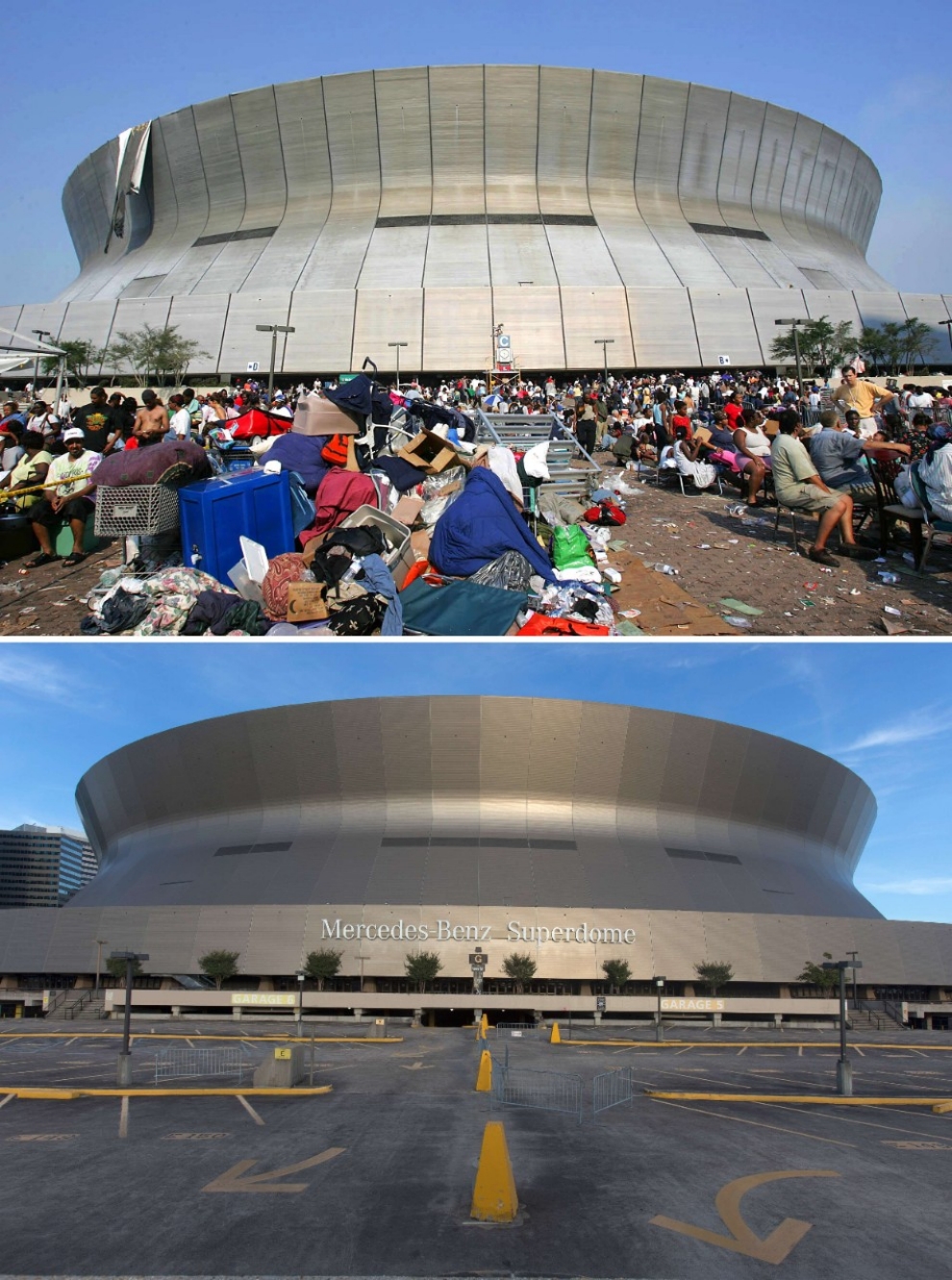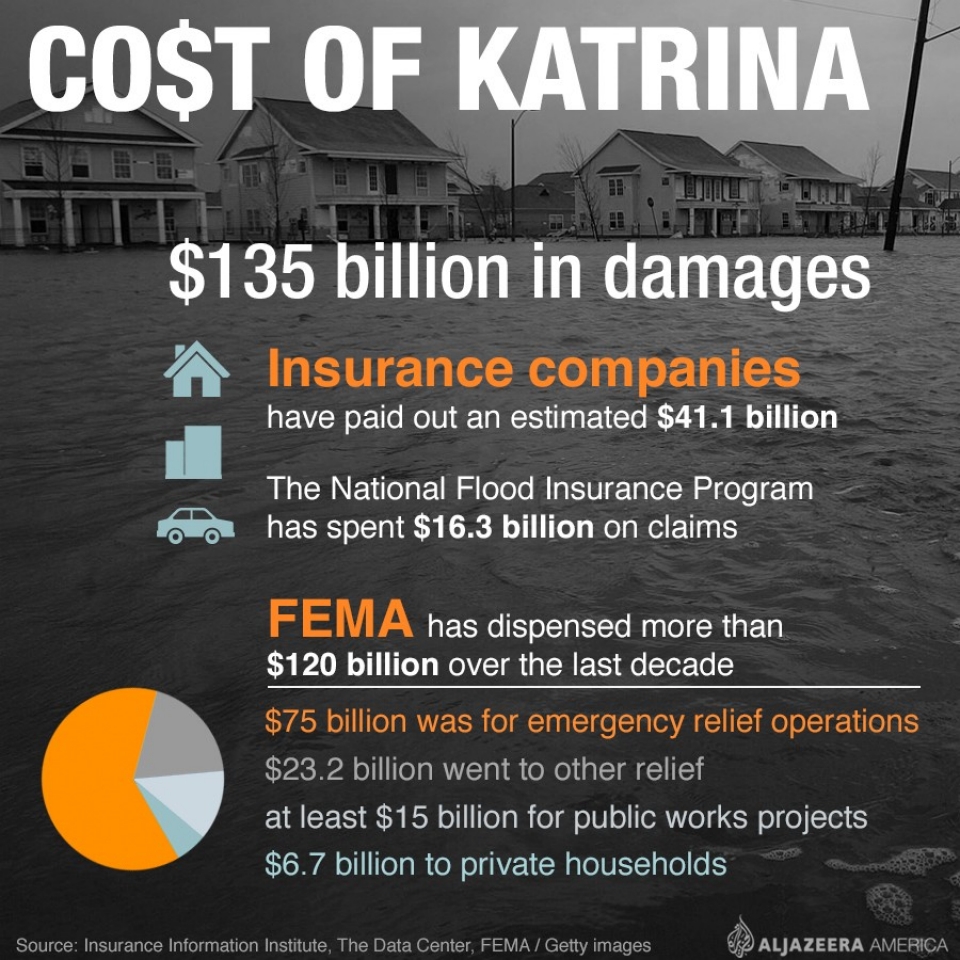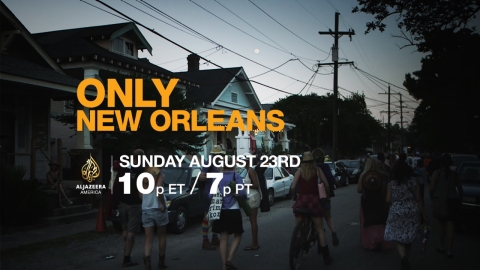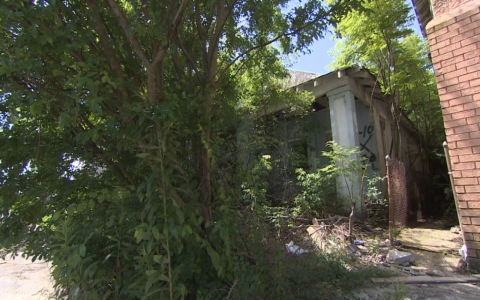Pointing toward a dilapidated house faintly visible in the distance, just beyond a stretch of levees that broke 10 years ago, New Orleans environmental activist Sandy Rosenthal’s voice trembled.
“The home that you can see through those trees, [the owner] was not able to go back,” she explained, before reaching an abrupt conclusion. “Every day he drives down this street and just looks at his house. Sometimes he stops.”
Rosenthal, the executive director of Levees.org, a nonprofit advocacy group, has led a campaign to hold officials to account for floodwall failures and prevent another Hurricane Katrina, which overwhelmed the Army Corps of Engineers’ system of protection from encroaching water.
While Hurricane Katrina was a natural disaster, the people of New Orleans continue debating what to blame — an unprecedented storm surge or mistakes by city, state and federal government up to then-President George W. Bush — for exceptionally poor preparation and response, the severity of which was outlined in a thorough investigation by a bipartisan congressional committee.
Eighty percent of New Orleans was flooded, in what Rosenthal terms “the worst civil engineering disaster in U.S. history,” a catastrophic event that damaged 134,000 homes — with significant destruction in 70 percent of occupied units — and more than 700 deaths locally and over 1,800 in the Gulf Coast region.
Arguing that the dozens of levee breaches could have been prevented by installing steel reinforcements dug 50 feet into the ground, Rosenthal hopes to avoid another calamity from hitting the city.
Katrina, which made landfall with 127 mph winds as a Category 3 hurricane Aug. 29, 2005, inundated residential neighborhoods above the height of basketball hoops in New Orleans while largely sparing the central business district and tourist areas.

A radar loop of Hurricane Katrina making landfall, Aug. 29, 2005.
National Oceanic and Atmospheric AdministrationWith 1 million Gulf residents displaced during the storm, the city ultimately lost some 100,000 people, going from a prestorm population of 484,674 to a rebounded 384,320 by July of last year. Subsequent storms Rita, Ike, Gustav and Isaac, which also caused extensive water and wind damage, did not help.
According to the “New Orleans Index at 10,” published by southeastern Louisiana nonprofit the Data Center, over the last decade the city has experienced more investment, less crime and a crackdown on corruption since the storm. Many neighborhoods continue to bounce back from the disaster, but Katrina’s huge toll has had a lasting impact.
But officials and residents still grapple with the scale of what Marlon Defillo, the New Orleans Police Department’s assistant superintendent at that time, described as “mass chaos” and “total distress,” with water in some areas such as the Lower Ninth Ward rising “up to 14 feet in 20 minutes.”
The Federal Emergency Management Agency (FEMA) labeled Katrina the “costliest hurricane” in U.S. history,” with estimated total damage of $135 billion. On 1.7 million claims, insurance companies have paid out an estimated $41.1 billion for residential, commercial and automotive damages, according to the Insurance Information Institute. The National Flood Insurance Program has spent $16.3 billion on claims.
Of more than $120 billion disbursed by FEMA to four affected Gulf states over the last decade, $75 billion was for emergency relief operations, at least $15 billion went to public works projects and $6.7 billion was given to private households.
Behind the enormous numbers are human stories that are equally shocking. One New Orleans victim, Robert Green, recalled, “Everything was floating. We had to hurry up and make the decision to get to the attic.” Once on the roof, he said, his family felt safe only for a few moments. “The house lifts up off the foundation and … actually floated up the street the way the current was pushing. So we wound up up the street on the roof of our house.”
Green’s mother and granddaughter perished in the storm. Drowning was the cause of death for 40 percent of fatalities in Louisiana, and 25 percent were a result of injury or trauma.

The city’s communications director during Katrina, Sally Forman, summarized the challenge of responding to a storm often compared to the Apocalypse. “We had fire, looting, police being shot at, people on rooftops, every kind of imaginable problem, bodies floating in the water — so many issues that we were ill-prepared for,” she said.
Although the city’s serious problems didn’t start or end with the storm, the recovery efforts since Katrina hit have highlighted a resilient spirit and significant strides in fixing deep-seated issues with poverty, racism, education and unemployment.
But bitterness remains. John Swenson, a New Orleans music historian, still blames city authorities for the destruction of New Orleans and now bemoans the changed nature of the city that has emerged a decade later.
The city went from being 67 percent African-American to about 60 percent. Despite the influx of college-educated newcomers, a consistent 27 percent of the city’s population remains below the poverty line. However, a considerably higher percentage of renters now pay more than 35 percent of their pretax income on housing.
“Everyone had to leave at the point of a gun … to all different points in the country where they had no chance of returning, because they had no money. That changed the demographic,” Swenson said.




Commentary: Hurricane Katrina helped change FEMA’s mandate to include adapting for climate change

Jonathan Martin speaks with Mayor Mitch Landrieu about the properties that remain abandoned in Katrina’s wake

Regional Transit Authority is caught between restoring service to heavily populated communities and less populated areas






Error
Sorry, your comment was not saved due to a technical problem. Please try again later or using a different browser.